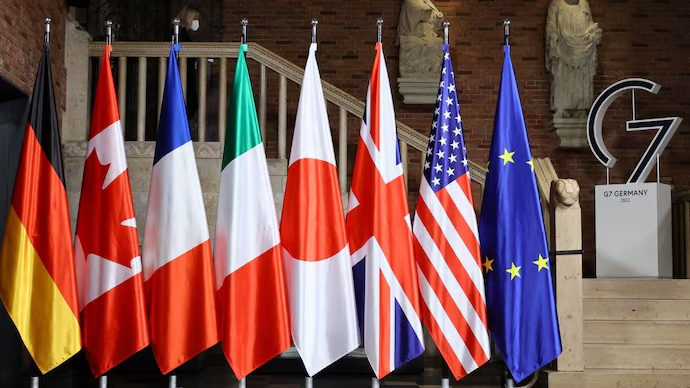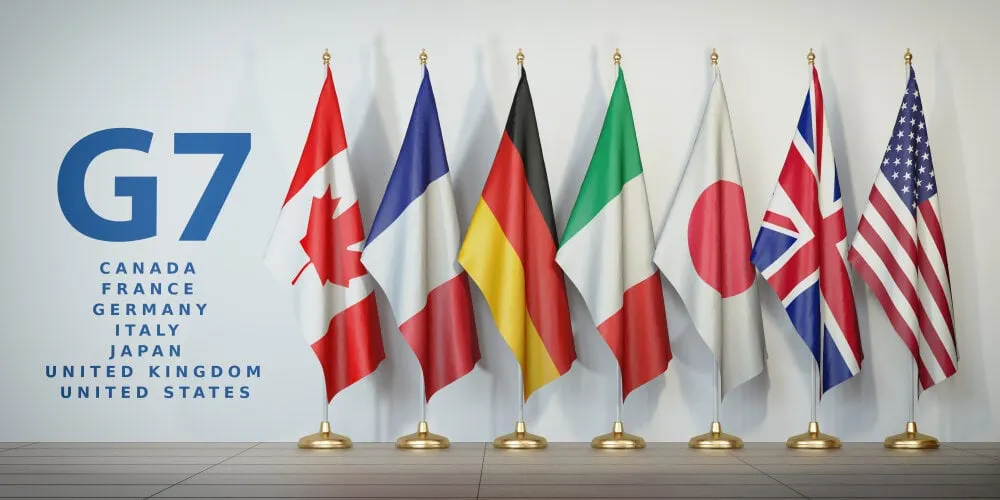
The escalating tensions between India and Pakistan have once again brought the region into the international spotlight. In recent months, both countries, nuclear-armed and deeply entrenched in historical conflict, have witnessed a significant uptick in military actions, leading to global concerns over the potential for full-scale war. The latest call for immediate de-escalation has come from the Group of Seven (G7) nations, who have urged both sides to refrain from further military provocations and prioritize diplomatic dialogue.
This appeal has taken on greater significance in the current geopolitical climate, where both countries are ramping up their defense capabilities. With the presence of nuclear weapons and a history of conflict, the potential consequences of an unchecked escalation in India and Pakistan’s rivalry are profound, not just for South Asia, but for global stability.
The Growing Threat of Military Confrontation
The conflict between India and Pakistan is one of the most enduring and dangerous in modern history. Since their partition in 1947, the two countries have engaged in three wars and numerous border skirmishes, with their rivalry focused primarily on the disputed Kashmir region. The situation has been further complicated by nuclear weapons, which were developed by both nations in the late 20th century, effectively changing the calculus of their military engagements.
In recent weeks, the tension has reached new heights. Following a missile threat from Pakistan’s Fateh-2 series, India launched a series of defensive operations to neutralize the threat. These defensive actions were followed by Pakistan’s continued military posturing, which included missile tests and military exercises along the border. India, in turn, conducted multiple surveillance operations to ensure the safety of its key strategic locations.
These actions have raised alarm among the international community, especially as both sides continue to bolster their military presence. The fear is that any further provocations, miscalculations, or accidents could trigger a full-blown military confrontation between the two nuclear-capable nations.
The Role of the G7 in Regional Stability
In this context, the G7—comprising the United States, Canada, France, Germany, Italy, Japan, and the United Kingdom—has stepped in to call for a de-escalation of the situation. The G7 is one of the most influential international forums for addressing global issues, and its involvement is a signal of the serious concerns the world has about the escalating tensions in South Asia.
The G7’s call for immediate de-escalation is significant because it underscores the international community’s recognition of the potential consequences of any military conflict between India and Pakistan. As two nuclear-armed nations, any military action could quickly escalate beyond the region, threatening not only the stability of South Asia but also the security of the broader international community.
The G7 statement, issued by foreign ministers of the member countries, emphasized the importance of dialogue, cooperation, and the peaceful resolution of disputes. The statement called on both India and Pakistan to halt their military provocations and return to a path of peaceful negotiations.
The Historical Context of India-Pakistan Relations
The India-Pakistan conflict dates back to the creation of the two nations in 1947, when British India was partitioned into India and Pakistan. The partition led to widespread violence and mass migrations, with Kashmir becoming a central point of contention. Since then, Kashmir has remained a highly militarized and disputed region, with both India and Pakistan claiming it in its entirety.
The rivalry between the two nations has been marked by three wars, the last of which took place in 1971, resulting in the creation of Bangladesh. Despite periods of relative peace, the two countries have never fully resolved their differences, and tensions have repeatedly flared, particularly in the context of Kashmir.
In 1998, both India and Pakistan conducted nuclear tests, marking the two countries as nuclear powers. This development dramatically altered the security dynamics in the region. With nuclear weapons in play, the risks of escalation have increased exponentially, and both nations have invested heavily in their military capabilities, including advanced missile systems.
The Fateh Missile and the Current Escalation
A central element of the current escalation is Pakistan’s development and deployment of its Fateh missile series, including the Fateh-2. This missile, with its precision strike capabilities, has raised alarm in India, which views it as a significant threat to its security. In response, India has bolstered its air defense systems, including missile interception technologies.
The recent interception of a Fateh-2 missile near Sirsa, Haryana, has further escalated tensions between the two nations. India’s successful interception was hailed as a testament to its growing missile defense capabilities, but it also served as a stark reminder of the persistent security threats both countries face. Pakistan’s growing missile arsenal, coupled with its efforts to modernize its military, has prompted India to adopt a more vigilant posture.
International Concerns Over the Risk of Nuclear Conflict
The presence of nuclear weapons in both India and Pakistan raises the stakes of any conflict. The G7 and other international bodies have expressed deep concern over the possibility of a nuclear conflict in the region. A nuclear war between India and Pakistan would have devastating consequences, not just for the two countries, but for global peace and security.
The risk of accidental escalation or miscalculation is high, given the tense and volatile nature of the relationship between India and Pakistan. With both countries operating under a policy of deterrence, any military action—whether by design or accident—could trigger a catastrophic response.
The G7’s call for restraint and diplomacy is therefore not just a plea for peace but a warning about the consequences of allowing the situation to spiral out of control. The world’s major powers are urging both India and Pakistan to de-escalate, return to the negotiating table, and seek a diplomatic solution to their long-standing disputes.
The Call for Diplomatic Engagement
In the face of rising tensions, the G7 has reiterated the importance of diplomacy as the only viable solution to the India-Pakistan conflict. Historical attempts at peace, including the Shimla Agreement of 1972 and the Lahore Declaration of 1999, have proven to be fragile, but they highlight the potential for diplomatic breakthroughs.
The international community believes that meaningful dialogue, facilitated by neutral third parties or organizations such as the United Nations, is the best path forward. This would allow both sides to address the underlying issues, including the status of Kashmir, and seek compromises that reduce the risk of future conflicts.
The Role of Global Powers and Neighboring Countries
Beyond the G7, other global powers have also voiced their concerns. The United States, for instance, has long played a role in mediating peace between India and Pakistan, although it has sometimes been seen as aligning more closely with India in recent years. The United Nations has also called for restraint, urging both countries to take the necessary steps to ensure that the situation does not escalate further.
Neighboring countries, such as China and Afghanistan, are also keeping a close eye on the developments. China, in particular, has strategic ties with Pakistan and has expressed support for Pakistan’s right to defend itself. However, China has also called for stability in the region, recognizing that any instability in South Asia could affect its own security interests.
India, for its part, has consistently emphasized its right to defend its sovereignty and territorial integrity. It has made it clear that it will not back down from defending itself against external threats, especially those posed by Pakistan’s military developments. However, India has also shown a willingness to engage in diplomatic efforts, as evidenced by its participation in international peacekeeping initiatives and multilateral discussions.
The Path to Peace: A Long and Winding Road
The path to peace between India and Pakistan is not an easy one. The historical, political, and military complexities of their relationship make finding a lasting solution challenging. However, the international community’s calls for de-escalation are a hopeful sign that dialogue and diplomacy can still play a central role in addressing the region’s issues.
The G7’s call for restraint is part of a broader global effort to prevent conflict and ensure that South Asia remains stable. While the immediate threat of war may have receded for now, the situation remains fragile. Both India and Pakistan will need to take significant steps toward reducing tensions and building trust if they are to avoid a catastrophic conflict.
In the end, the fate of South Asia—and the broader implications for global peace—rests on the willingness of India and Pakistan to embrace diplomacy over war. The G7’s intervention is a timely reminder that peace is not only in the hands of the two nations but also in the interest of the entire international community.

